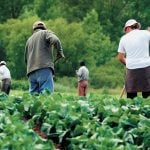BRANDON, Man. – Bernice Toews spends at least two hours with each patient during their first visit to her Virden, Man. clinic.
She takes an extensive medical history, gets the patients to describe their home and work environments and tell her about their lifestyles.
She’ll use the information to prepare a personalized herbal formula that could include dried dandelions to treat liver problems or ground ivy to ease a respiratory tract infection.
Toews worked as a registered nurse before studying in England to become a medicinal herbalist.
Read Also

Alberta may eliminate marked fuel
Alberta may soon stop selling dyed gasoline and diesel.
She said doctors seem to be coming around to the answers she says herbal medicine can offer, but the change is slow.
“We can’t do everything but then orthodox medicine can’t either,” she told delegates to the second annual Prairie Medicinal and Aromatic Plants conference held here March 9-11.
Doctors and others in the traditional medical profession tend to ignore herbal remedies, says a University of Brandon botanist who studies the healing properties of plants.
“The established medical profession has passed a very jaundiced eye on traditional herbal remedies,” said Robin Marles.
And with good reason, Marles said. He was involved in an undercover report on the television program Marketplace which exposed companies that falsely claimed their products contained herbs that heal.
The program looked at feverfew, a herb registered as a drug in Canada to help ward off migraines. Only three companies are licensed to sell feverfew products for migraines although 20 companies are selling such bottles on store shelves, the report revealed.
“Some non-registered food type feverfew products contained none of the active ingredients of the registered drug,” Marles said.
While the medical establishment is skeptical, Marles said consumers have voiced a different opinion through their buying power.
Rob Rogers, an Edmonton aromatherapist and herbalist for 28 years, agrees.
Rogers prescribes native prairie herbs with anti-bacterial, anti-fungal and anti-viral properties to his patients every day.
Spruce oil, for example, can be used to control spasms and ease bronchial problems, Rogers told the conference. Yarrow helps menstrual pain, poor digestion and kidney problems.
About half of Rogers’s clients are baby boomers who want to stay healthy. Others are people looking for natural or complementary treatment for a chronic illness.
To offer public assurance, companies are turning to Health Canada’s rules to register a herbal remedy as a drug product, a status indicated by a drug identification number on the side of the bottle.
“This benefits manufacturers and producers because it is profitable and establishes a reputation for quality products,” Marles said. “It benefits consumers because they can be assured of value for their money.”
Branka Barl, with the Saskatchewan Herb Research Centre, said the health department has a lot of catching up to do.
“My prediction is that the need and demand for herbal products is so large regulations will have to be made flexible to accommodate the wide range of botanicals already on the market,” she said.
Governments shouldn’t hold out for full scientific proof for every claim herbal medicine can make, said James Simon, a medicinal plant specialist with Perdue University in Indiana.
“One could argue that if a plant has been used for a thousand years on millions of people and there’s some evidence, even though it is circumstantial, that it works for certain ailments,” he said.
Linda Metke and Michele Etter discovered they had something in common when they met at a conference on growing and marketing medicinal plants.
Both have children, run a farm with their husbands and find themselves looking for some outside income.
They’ve heard growing herbs means long hours, hard work and sometimes comes with little thanks.
Some women might say raising children as a farm wife in Saskatchewan makes you a perfect candidate.
And Metke and Etter aren’t alone. Seventy-five percent of the International Herb Association’s members are women.
Alberta medicinal plants specialist Stan Blade said he’s not surprised with the breakdown even though agriculture has traditionally been male-dominated.
“In other areas like child rearing the labor for women has not been valued and that’s where women have an opportunity to cash in,” Blade told 300 participants in this month’s Prairie Medicinal and Aromatic Plants conference.
“Labor is your biggest investment in growing medicinal herbs.”
Money to be made
The American association said its members’ average income is $16,000.
“Its not really enough to support the family but a good second income,” he said.
Metke began thinking about getting a job off their mixed cattle/grain farm south of Swift Current when her children were grown.
“I hadn’t been in the workforce, so to go out and get a job I’d be looking at minimum wage and probably end up spending that same money on gas,” she said. “It’s just not worth it when I can do something at home.”
The family already grows 11 acres of fruit, so herbs seemed like a natural progression. She sowed a test plot of echinacea and dandelion last year and wants to eventually grow 10 acres of healing herbs.
Etter also started growing herbs because of her children.
She realized she couldn’t live with the choices that came with trying to balance her farm duties, raising two young children and working as a full-time chemist in Regina.
“It was my children I ended up saying no to and it’s just not worth it. This is something that will fit in with my family life.”
While the marketing end of growing medicinal plants scares some farmers off, it has been part of the Etter’s business of growing lentils, peas and canaryseed on their Regina-area farm for the past 18 years.
“This is something for me. My husband runs the farm on a large scale but this is something I can do on my own.”
She plans to plant echinacea seed this spring.














